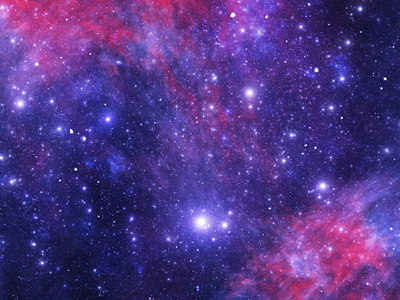
Ask the AI Tutor
Need help with Radioactivity - Nuclear Fusion? Ask our AI Tutor!
AI Tutor - Lucy
Connecting with Tutor...
Please wait while we establish connection

Every star goes through a life cycle, which is determined by its size.
Radioactivity - Nuclear Fusion
In GCSE Physics you study nuclear fusion, where light nuclei join together and release enormous energy, similar to the reactions powering our Sun and other stars.
1 .
Which element is the main source of fuel that our sun uses for the process of nuclear fusion?
Hydrogen
Zinc
Boron
Lead
The Sun is about four and a half thousand million years old. This is about half way through its life cycle
2 .
Every star goes through a life cycle. What is this life cycle determined by?
Elements within the star
Size of the star
Gravity surrounding the star
Number of planets orbiting the star
Stars containing the most mass burn the brightest and have the shortest lifespan. Without these super-massive stars, only the elements up to and including iron would exist naturally
3 .
Why does a star not explode or collapse during the 'main sequence' of its life?
Not enough energy within the star to explode or collapse
The forces within it are in equilibrium
The star is solid so cannot collapse
They do explode when they reach their 'main sequence'
The gravitational pull of the weight of the star is in equilibrium with the outward radiation pressure generated by the burning of the fuel within the core of the star
4 .
When a star dies, which of the following could a star turn into?
White dwarf
Black hole
Supernova
All of the above
The material in a white dwarf is extremely dense as there is no more radiation pressure from nuclear fusion to balance the inward pull of gravity
5 .
Which of the following is an example of nuclear fusion?
Energy released by nuclear power plants
Energy created to power trains
Energy released in stars
Energy released to thrust rockets into space
Stars are excellent examples of the process of nuclear fusion. They burn vast quantities of fuel every second, and reach incredibly hot temperatures
6 .
What is nuclear fusion?
Nuclear fusion is the separation of an atomic nucleus into two smaller nuclei
Nuclear fusion is the joining of two atomic nuclei into one larger nucleus
Nuclear fusion is the process by which atoms absorb energy
Nuclear fusion occurs when atoms absorb electrons
The process requires large amounts of energy to start. When it has started, the energy released from the fusion reaction is more than enough to keep it going - it is a chain reaction. Overall, it is highly exothermic
7 .
What force pulls dust and gas together in space to form stars?
Electro-weak force
Electromagnetic force
Gravity
Strong force
Anything that has mass has a gravitational attraction, however small
8 .
How can we detect black holes if we can't see them?
We can see them when other stars shine on them
We can detect their immense gravitation strength affecting other objects
We can send probes into space and if we lose one we know it has entered a black hole
There is no way to detect black holes
No one has ever seen a black hole directly, but we know they are there because of the gravitational effect they have on other objects within their vicinity
9 .
Which element was abundant in the early universe?
Hydrogen
Iron
Oxygen
Zinc
It is the simplest element
10 .
How were most of the heavier elements in the universe created?
Within stars and ejected into space when the stars exploded
Gravity pulled smaller atoms together
Electro-attraction
Smaller atoms randomly collided together to form heavier elements
It is in supernova explosions that the naturally-occurring elements with atomic numbers greater than that of iron are formed
**Unlimited Quizzes Await You! 🚀**
Hey there, quiz champ! 🌟 You've already tackled today's free questions.
Ready for more?
Ready for more?
🔓 Unlock UNLIMITED Quizzes and challenge yourself every day. But that's
not all...
not all...
🔥 As a Subscriber you can join our thrilling "Daily Streak" against other
quizzers. Try to win a coveted spot on our Hall of Fame Page.
quizzers. Try to win a coveted spot on our Hall of Fame Page.
Don't miss out! Join us now and keep the fun rolling. 🎉
**Unlimited Quizzes Await You! 🚀**
Hey there, quiz champ! 🌟 You've already tackled today's free questions. Ready for more?
🔓 Unlock UNLIMITED Quizzes and challenge yourself every day. But that's not all...
🔥 As a Subscriber you can join our thrilling "Daily Streak" against other quizzers. Try to win a coveted spot on our Hall of Fame Page.
Don't miss out! Join us now and keep the fun rolling. 🎉






